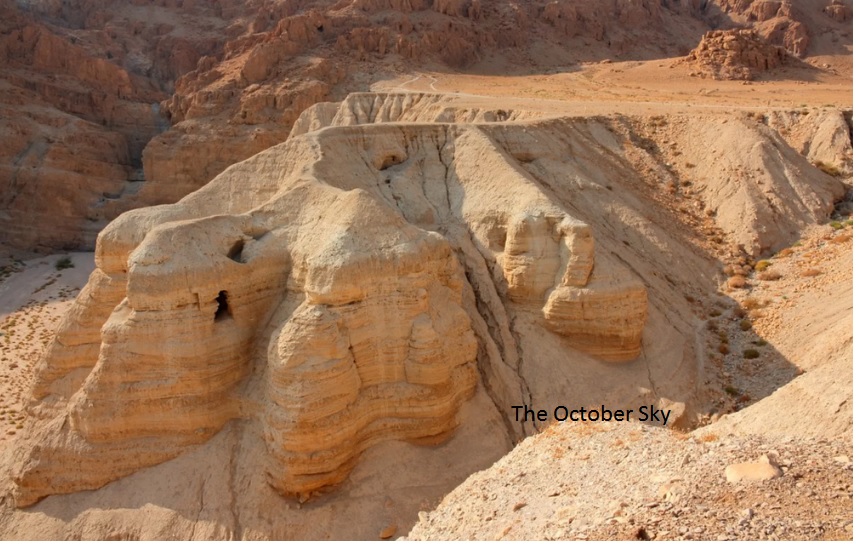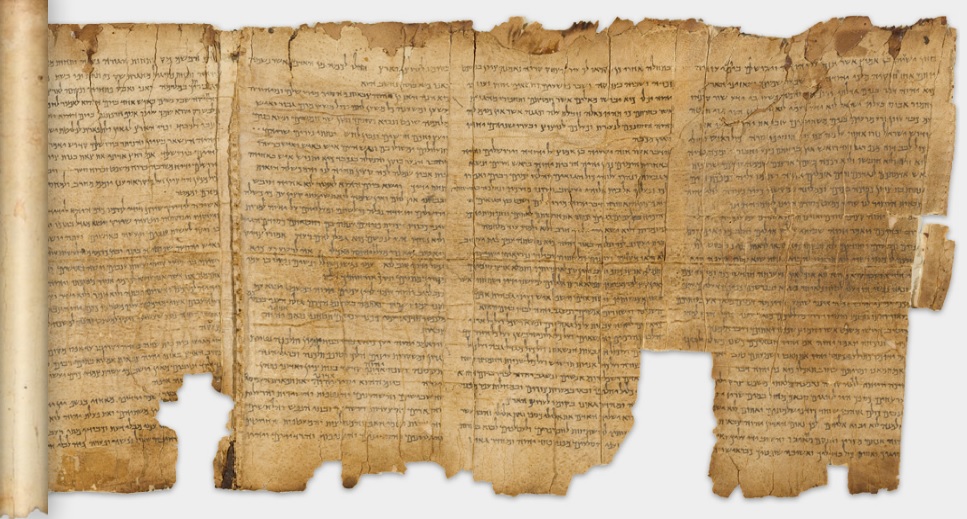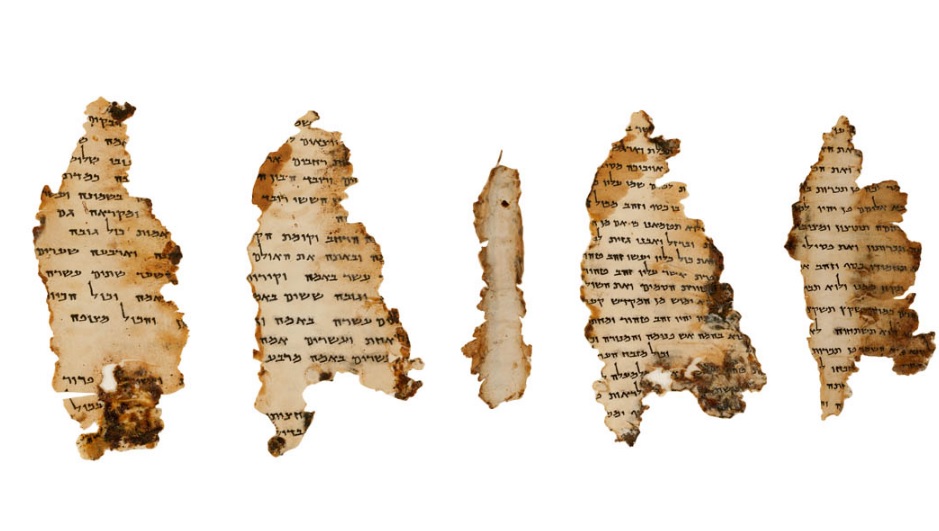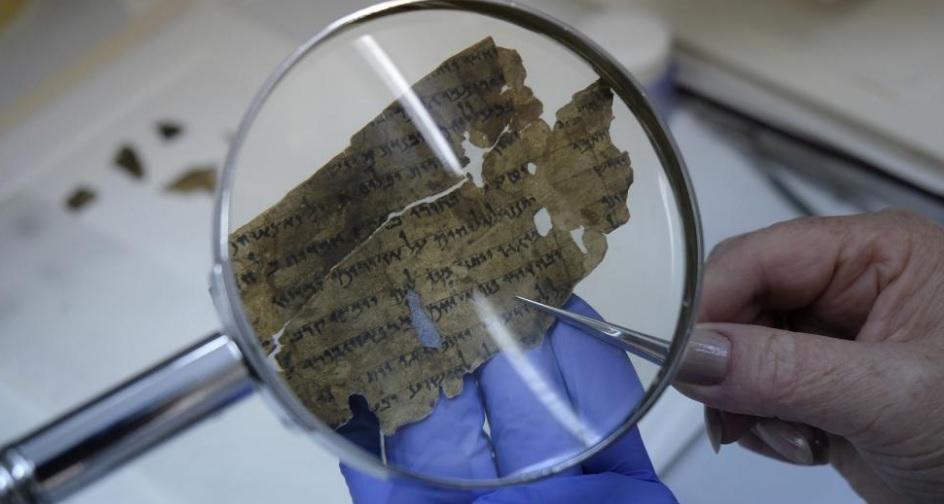The Museum of the Bible in Washington, DC says five of its 16 most valuable artifacts, the Dead Sea Scrolls fragments in their collection are fake and will not be displayed anymore.
The announcement has serious implications not only for the Bible Museum but for other evangelical Christian individuals and institutions who paid top dollar for what now seems to be a massive case of archaeological fraud.
Jeffrey Kloha, chief curator for the Museum of the Bible, said in a statement that the revelation is “an opportunity to educate the public on the importance of verifying the authenticity of rare biblical artifacts, the elaborate testing process undertaken and our commitment to transparency.”
The Dead Sea Scrolls were discovered in a series of twelve caves around the site known as Wadi Qumran near the Dead Sea in the West Bank (of the Jordan River) between 1946 and 1956 by Bedouin shepherds and a team of archeologists.

German-based scholars tested the fragments and found that five “show characteristics inconsistent with ancient origin and therefore will no longer be displayed at the museum.”
As per CNN “ we raised questions about the museum’s Dead Sea Scroll fragments in an article published last November, as the Green family prepared to unveil their new, $500 million museum. At 430,000 square feet, and with views of the Capitol, the Bible museum represents a significant investment for its evangelical founders.” And they added, Now scholars say the Dead Sea forgeries could be part of the most significant sham in biblical archeology since the “Gospel of Jesus’ Wife,” a fiasco that hoodwinked a Harvard scholar and made worldwide news in 2012. Some scholars estimate that as many as 70 forged fragments have hit the market since 2002.
The scrolls are a collection of ancient Jewish religious texts first discovered in the mid-1940s in caves on the western shore of the Dead Sea in what is now Israel. The massive cache of Hebrew documents is believed to date back to the days of Jesus. With more than 9,000 documents and 50,000 fragments, the entire collection took decades to fully excavate.

Most of the scrolls and fragments are tightly controlled by the Israeli Antiquities Authority. But around 2002, a wave of new fragments began mysteriously appearing on the market, despite skepticism from Biblical scholars.
Jeffrey Kloha, chief curator for the Museum of the Bible, “As an educational institution entrusted with cultural heritage, the museum upholds and adheres to all museum and ethical guidelines on collection care, research and display.”
These fragments, they warned, were specifically designed to target American evangelical Christians, who prize the scrolls. That appears to be exactly what happened; a Baptist seminary in Texas and an evangelical college in California reportedly paid millions to purchase alleged pieces of the scrolls.

Also eagerly buying up fragments was the Green family — evangelical Oklahoma billionaires who run the Hobby Lobby chain of craft stores and who famously sued the Obama administration on religious grounds, saying they didn’t want to pay to provide their employees access to the morning-after pill or intrauterine devices.
These fragments, they warned, were specifically designed to target American evangelical Christians, who prize the scrolls. That appears to be exactly what happened; a Baptist seminary in Texas and an evangelical college in California reportedly paid millions to purchase alleged pieces of the scrolls.
Also eagerly buying up fragments was the Green family — evangelical Oklahoma billionaires who run the Hobby Lobby chain of craft stores and who famously sued the Obama administration on religious grounds, saying they didn’t want to pay to provide their employees access to the morning-after pill or intrauterine devices.
On the website, “The Lying Pen of Scribes,” scholars and scientists have identified more than 70 purported Dead Sea Scroll fragments that have surfaced on the antiquities market since 2002. Ninety percent of those are fake, said Arstein Justnes, a professor of biblical studies at the University of Agder in Norway, including the Museum of the Bible’s.
As reported by CNN, In April 2017, Bible Museum sent five fragments to the Bundesanstalt für Materialforschung und-prüfung (BAM), a German institute for analyzing materials, where scholars tested for 3D digital microscopy and conducted material analyses of the ink and sediment on the papyrus. Scholars have theorized that forgers write on top of ancient scraps of papyrus or leather, making the scrolls appear authentic until the ink is tested.Their report, which the Bible Museum said they recently received, “further raises suspicions about the authenticity of all five fragments.”
Before the Dead Sea Scrolls were discovered 70 years ago, the earliest and most complete version of the Hebrew Bible was from the 9th century. But then Bedouin shepherds stumbled on the scrolls, hidden away for nearly 2,000 years in caves in Qumran, on the western shore of the Dead Sea. In an interview before the Bible museum opened last Fall, Steve Green told CNN that wasn’t sure who sold his family the Dead Sea Scroll fragments. “There’s been different sources, but I don’t know specifically where those came from.”